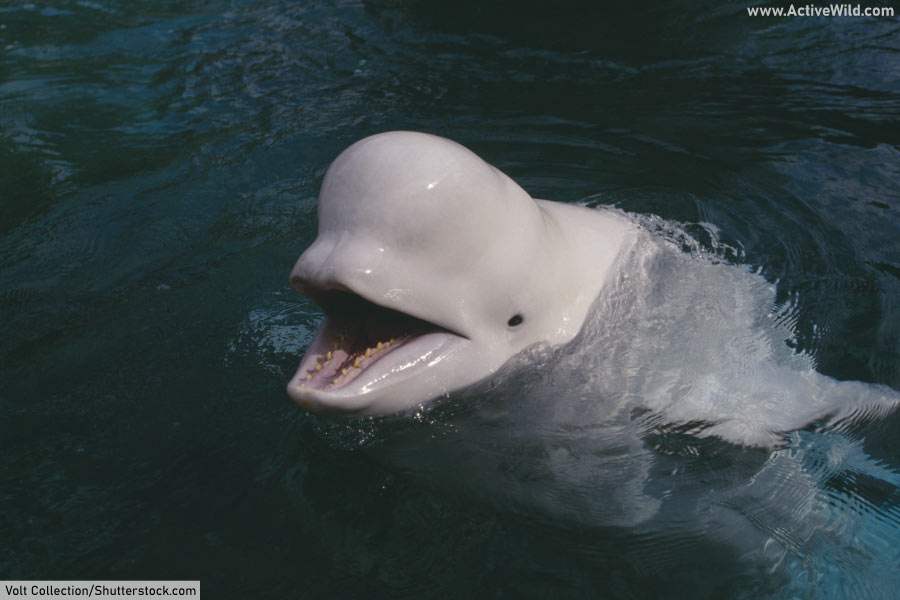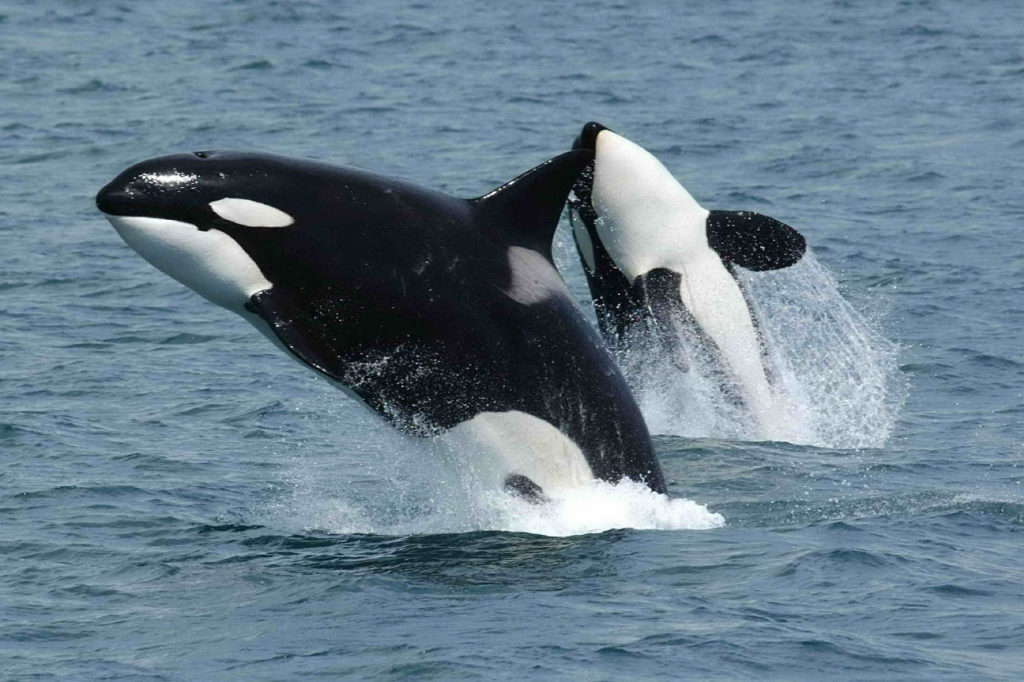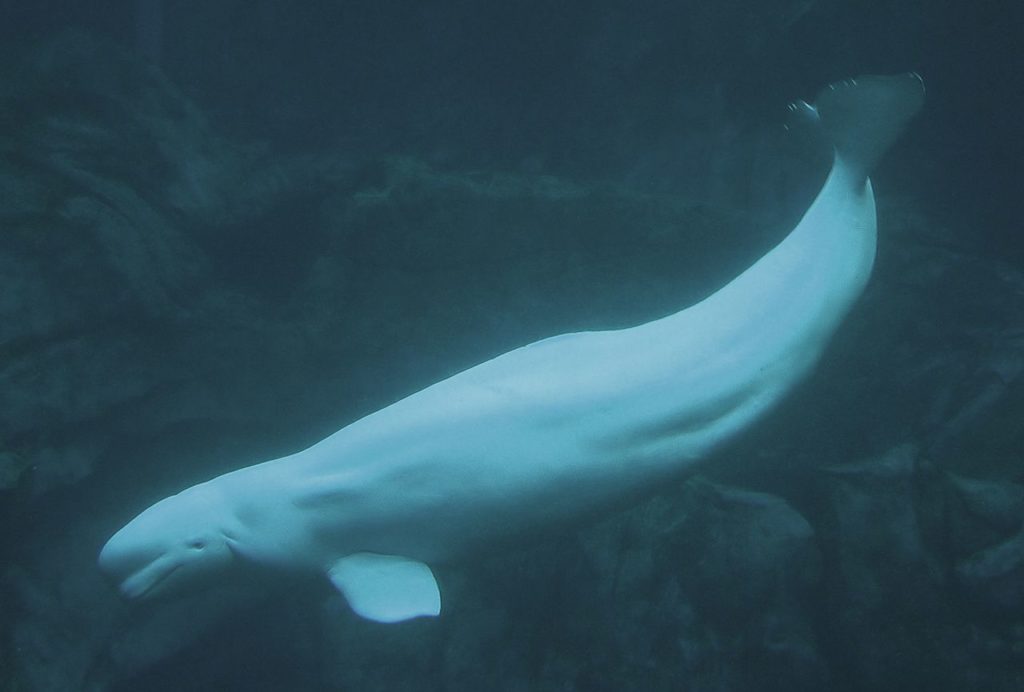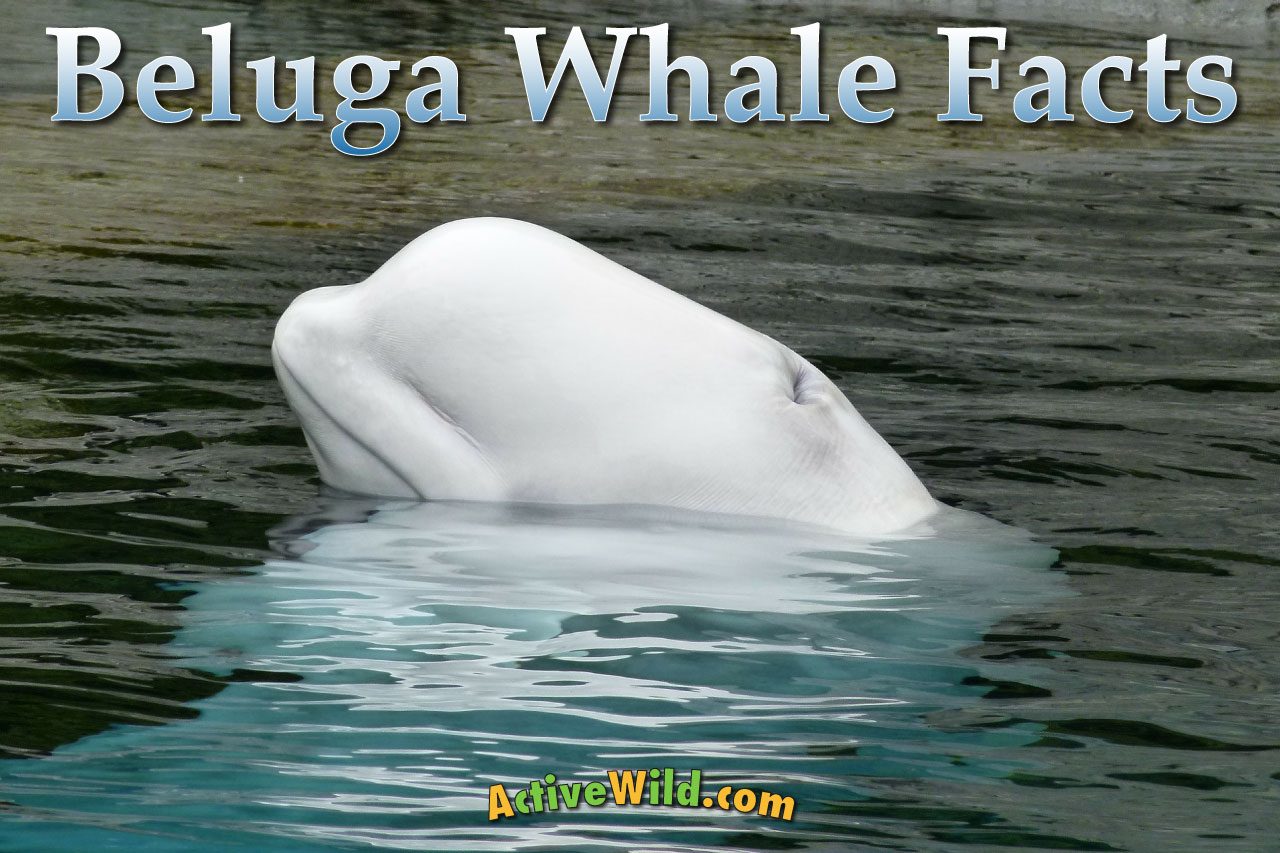Beluga whale facts, pictures and in-depth information.
Beluga Whale Facts: Introduction

The beluga whale is a small whale known for its striking white skin. It is a member of a group of whales known as toothed whales. This group also contains species such as the killer whale and all dolphins. The beluga whale's closest living relative is the narwhal.
The beluga whale is found in Arctic and subarctic waters, and has a number of adaptations for living in this cold, inhospitable environment.
On this page is a complete guide to this distinctive Arctic whale.
Related Pages on Active Wild
- You can see more Arctic animals on this page: Arctic Animals
- You can see a list of all whales on this page: Types of Whales - Pictures & Facts On EVERY Species
Free beluga whale printable question sheet
Click here or on the image below to download a free printable beluga whale question sheet for use with this page.

Beluga Whale Facts at a Glance
- Other Name(s): beluga, melonhead
- Scientific name: Delphinapterus leucas
- Type of Animal: Mammal
- Animal Family: Monodontidae
- Where Found: Arctic Ocean; Subarctic far north of the Atlantic and Pacific Oceans (around North America & Russia).
- Length: (male) 3.5 – 5.5 m (11 – 18 ft.) (female) 3 – 4.1 m (9.8 – 13.5 ft.)
- Weight: (male) 1,100 – 1,600 kg (2,430 – 3,530 lb.) (female) 700 – 1,200 kg (1,540 – 2,650 lb.)
- Conservation Status: Least Concern

Beluga Whale Fun Facts
- New-born and young beluga whales are grey or brown in color. The species gradually attains its distinctive white color as it reaches adulthood (this takes between 7 and 9 years).
- Some beluga whales are migratory, overwintering in deep offshore waters and spending summer in shallow coastal waters. Some beluga populations stay in the same place all year round.
- The beluga whale is known to spend time in freshwater habitats, and is often seen in estuaries and even in rivers.
- Beluga whales shed the outer layer of their skin once a year by rubbing themselves against gravel.
- The beluga whale lacks a dorsal fin, instead having a dorsal ridge (a ridge of hard flesh running along the center of the back).
- Unlike those of other whales, the beluga’s neck vertebrae (the bones of its neck) aren’t fused. This allows the beluga to look around without moving its whole body.
- The beluga travels in pods ranging in size from a few individuals to several thousand. The average group consists of 10 individuals.
- The beluga whale is nicknamed the ‘canary of the sea’ due to its numerous high-pitched vocalizations.
- Prey is located using echolocation.
- The beluga whale is not an endangered species. The IUCN Red List rates the species "Least Concern".
- In autumn 2018, a beluga whale was seen in the River Thames near London, England. It is extremely unusual for a beluga whale to be seen this far south. The animal was given the nickname 'Benny the Beluga'.
Beluga Whale Family & Related Animals

Beluga whales, like all whales, are marine mammals in the infaorder Cetacea. (An infraorder is a group of related animals.)
Being a mammal, the beluga whale is warm blooded, gives birth to fully-formed young and breathes air with lungs.
- You can find out more about the characteristics of mammals here: Mammals: The Ultimate Guide.
Whales are split into two main groups: baleen whales (the Mysticeti), and toothed whales (the Odontoceti).
Beluga whales are toothed whales. Whereas baleen whales such as the blue whale and humpback whale are toothless filter feeders that feed on tiny plankton, toothed whales have teeth for catching fish and squid.
Other toothed whales include the sperm whale, the killer whale (orca) and dolphins.
The beluga whale is a member of the family Monodontidae. The only other member of this family is the narwhal.
The beluga whale’s scientific name is Delphinapterus leucas, which means ‘white dolphin without fin’.
Beluga Whale Physical Description

The beluga’s most notable characteristic is its color. Born either grey or brown, once it reaches adulthood the beluga has transformed into a striking creamy white. This takes around 7 years for a female, and 9 years for a male.
Another notable characteristic of the beluga whale is the round bump on the animal’s head. This contains an echolocation organ known as the ‘melon’.
Echolocation
Like most whales, the beluga whale can navigate and find food using echolocation. By listening to the echoes of sounds it has emitted, the whale can essentially ‘see’ its surroundings using sound.
How Big Is A Beluga Whale?
The beluga whale is a relatively small whale, being somewhere between the size of a dolphin and one of the larger toothed whales.
Male belugas are larger than females, with the very largest reaching 1,900 kg (4,190 lb.). Females reach weights of up to 1,200 kg (2,650 lb.).
Molting
Unlike most whales, which shed their skins all year round, belugas only molt their distinctive white skin once a year. They help the process along by rubbing their bodies against rocks and the gravel of the sea bed.
In some Arctic estuaries, hundreds of belugas have been observed doing this at the same time.
Arctic Adaptations

The beluga’s compact body shape suits its arctic lifestyle. Belugas are warm blooded, yet have to survive in temperatures as low as -32°F (0°C). The beluga’s compact body shape reduces its surface area, thereby slowing heat loss.
A thick layer of outer fat called blubber provides further protection from the cold Arctic water. Blubber serves to insulate the whale’s important internal organs from the cold.
Blubber also provides the beluga with a source of energy during migration; the fat acts as an important food reserve when feeding opportunities are low.
The Beluga Whale lacks a dorsal fin (the fin found on a fish or whale’s back, used for stability when swimming rapidly). Instead, the Beluga has a dorsal ‘ridge’. This aids the beluga to break through ice to maintain vital breathing holes.
The lack of dorsal fin also allows the belugas to take refuge close to the ice itself; killer whales, with their large dorsal fins, are unable to get as close to the surface.
The Beluga Whale’s white color provides camouflage against the ice.
Most cetaceans have neck vertebrae that are fused for greater stability. The Beluga’s vertebrae are not fused. This gives it greater head and neck flexibility, allowing it to look around without moving its whole body.
Belugas are able to swim backwards, helping them to negotiate the difficult ice crevices with ease.
Beluga Whale Facts: Behavior
Beluga whales are highly social. They live in groups called pods, which range in size from containing just a few individuals to being several thousand strong. An average pod of beluga whales contains around 10 whales.

Beluga Whales communicate frequently using a variety of high-pitched clicks and whistles. Because of this they are sometimes called the ‘Canaries of the Sea’. The whales are also known for their inquisitiveness, often approaching boats to see what’s going on!
You can see some footage of these amazing animals in the video below.
Unlike other toothed whales such as orcas and dolphins, belugas rarely breach the water’s surface. This is due to their relatively slow speed and body shape. By remaining underwater belugas also make themselves less visible to predators.
As is the case with many large animals, the rate of beluga whale reproduction is slow, with one calf being born to an adult female every 3 years. Gestation lasts between 12 and 15 months. The calves are usually born in deeper water during the winter.
Beluga Whale calves are initially fed on their mother’s milk. This has a very high fat content, ensuring fast growth.
Where Do Beluga Whales Live?

Beluga Whales are found in the Northern Hemisphere, from the west coast of Greenland to Svalbard in Norway. The cold, Arctic coastal waters are their main habitat. Resident populations are also found in the Cook Inlet and in the St Lawrence River system in Canada.
The beluga whale is one of the few cetaceans that is found in both salt and fresh water habitats.
Beluga Whale Diet
Belugas feed on a variety of prey, including fish, squid, octopuses and crabs. Using the rows of peg-like teeth that line their upper and lower jaws, beluga whales grab and tear their prey rather than chewing it.
The Beluga Whale’s well-defined lips are capable of ‘spitting’ water underwater. This is used to uncover hidden or buried prey.

Beluga Whale Threats
The beluga is listed as Least Concern by the IUCN. Localized, smaller populations are often under greater threat due to the strong philopatric* nature of the species. The Cook Inlet population, for example, is listed as Critically Endangered.
*Tending to remain or return to the same areas again and again.
Belugas are threatened in several ways:
- Changing levels of sea ice due to climate change can leave individuals exposed to predators such as Killer Whales.
- Beluga whales can become stranded by ice freezing around them. If there are no other air holes nearby, the beluga whales are trapped and may eventually starve.
- Belugas are hunted by indigenous people for food.
- Overfishing of the beluga whale’s prey species has resulted in the near collapse of some populations.
- Increasing oil and gas expansion, noise pollution from shipping, and chemical industrial pollution all threaten the Beluga’s environment.
Beluga Whale To The Rescue!
In 2009 Mila, a captive beluga whale, rescued a free diver who had got into difficulty in her tank. During a free diving task, Yang Yun suffered from severe leg cramps and was unable to swim back to the surface. As she started to sink, Mila took hold of the diver’s legs and guided her all the way to the surface!
Of course, we don’t know the reasons behind behavior such as this. It’s very easy to anthropomorphize (give human characteristics to) animal behavior. But it does make a good story!
Beluga Whale Facts: Conclusion
We hope that you have enjoyed learning about beluga whales.
- You can find out about more amazing Arctic animals here: Arctic Animals List
- Find out about the Arctic region here: Arctic Facts
- See a list of ALL whale species on this page: Types of Whales Pictures & Information



What kind of fish do they eat?
Hi, great question.
Belugas are opportunistic hunters (i.e. they are adaptable and generally eat whatever species are present). Fish known to be eaten by belugas include: Pacific salmon, Arctic cod, Greenland halibut, herring, sole, eulachon, smelt and flounder.
We hope this helps!
Regards,
Active Wild Admin
Dear Admin,
do the beluga whales have any natural predators?
if so, please let me know!!
Hi Ollie,
Great question!
The beluga whale’s main predators are the killer whale and the polar bear.
We hope this helps!
Regards,
The Active Wild Team